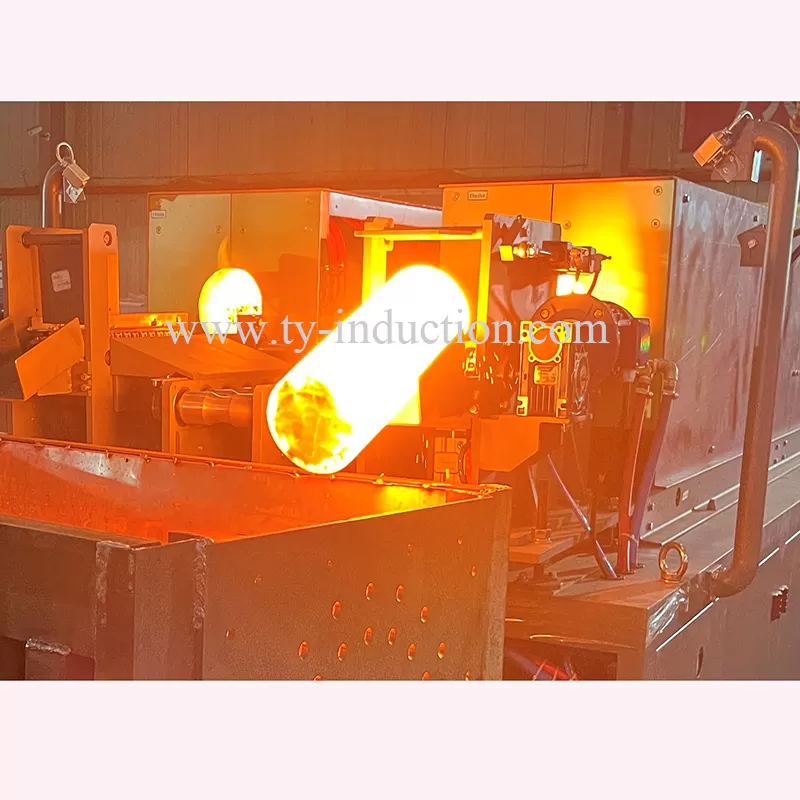Mar. 13, 2025
Induction forging is a cutting-edge heating process used in metalworking industries to heat metals to forging temperatures using electromagnetic induction. This method is highly efficient, providing precise control over temperature, ensuring minimal material waste, and improving product quality. In this comprehensive guide, we will explore the working principles, advantages, applications, and essential considerations for implementing induction forging in industrial operations.
Induction forging is based on electromagnetic induction, where a high-frequency alternating current (AC) passes through an induction coil, generating an electromagnetic field. This field induces eddy currents in the metal workpiece, causing it to heat up due to electrical resistance. The heat penetrates the metal uniformly, allowing for precise temperature control without direct contact.

Induction Coil – Generates the electromagnetic field.
Power Supply – Converts electrical energy to the required frequency and power.
Workpiece – The metal to be heated for forging.
Cooling System – Prevents overheating and maintains efficiency.
Control System – Regulates temperature, power levels, and process timing.
Induction forging is highly energy-efficient, as it heats only the necessary portion of the metal, reducing energy waste. Compared to traditional heating methods like gas furnaces, induction can achieve up to 90% efficiency in energy conversion.
Since heat is generated directly within the metal, induction forging is significantly faster than conventional methods. This reduces cycle times and increases production output, making it ideal for high-volume manufacturing.
Induction forging equipment allows for precise control over temperature and heating zones. This results in consistent quality and repeatable results, which is crucial in industries requiring tight tolerances.
Traditional heating methods expose metal surfaces to open flames or heated air, leading to oxidation and scaling. Induction forging operates in a controlled atmosphere, minimizing material loss and improving surface quality.
Since induction heating eliminates the need for open flames and fossil fuel-based heating, workplaces are cleaner and safer. This reduces fire hazards and improves worker safety by lowering exposure to extreme temperatures.
Induction forging machine is used in various industries due to its versatility and efficiency. Some of its key applications include:
Manufacturing of crankshafts, gears, and axles.
Producing high-strength components for vehicles.
Precision forging of jet engine components.
Production of titanium and nickel-based alloys.
Heating tool steel for forging precision dies.
Creating hard-wearing cutting tools.
Manufacturing reinforced steel parts.
Creating heavy-duty fasteners for structural applications.
Forging of drill bits, flanges, and pipeline components.
Production of wear-resistant parts for harsh environments.
The choice of induction frequency depends on the material and the depth of heating required:
Low-frequency (1-10 kHz): Suitable for deep penetration in large workpieces.
Medium-frequency (10-100 kHz): Balances penetration and surface heating.
High-frequency (100 kHz-1 MHz): Ideal for thin workpieces requiring surface heating.
The design of the induction coil affects the efficiency and uniformity of heating. A well-designed coil should ensure even heat distribution while minimizing energy loss.
Using infrared pyrometers or thermocouples ensures accurate temperature control, preventing overheating or underheating, which can lead to defective parts.
Proper water-cooled systems are essential to maintain the efficiency of the induction coil and prevent overheating of system components.
The effectiveness of induction forging depends on the electrical conductivity and magnetic properties of the metal. Commonly forged materials include:
Steel and Stainless Steel – Widely used due to high strength.
Aluminum Alloys – Requires precise temperature control.
Copper and Brass – Used for electrical and plumbing applications.
Titanium Alloys – Common in aerospace and medical industries.
| Feature | Induction Forging | Traditional Forging (Furnace) |
|---|---|---|
| Energy Efficiency | High (90%) | Low (30-50%) |
| Heating Speed | Fast (seconds) | Slow (minutes) |
| Temperature Control | Precise | Less precise |
| Oxidation Risk | Minimal | High |
| Workplace Safety | Safer (no open flames) | Hazardous (open flames, emissions) |
| Material Waste | Low | High |
Induction forging is a game-changing technology in modern manufacturing, offering unmatched efficiency, precision, and sustainability. Whether in the automotive, aerospace, or tool-making industries, this process delivers high-quality components with minimal waste and reduced costs. By investing in advanced induction forging systems, companies can achieve superior product quality and competitive market advantage.
Previous: None
If you are interested in sending in a Guest Blogger Submission,welcome to write for us!
All Comments ( 0 )